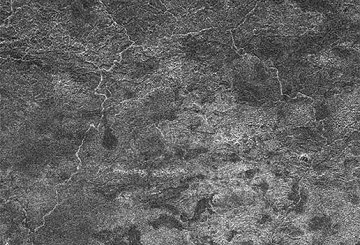 The Perseid meteor shower is coming. Would you like a call when it's time to look? Sign up for Spaceweather PHONE.
The Perseid meteor shower is coming. Would you like a call when it's time to look? Sign up for Spaceweather PHONE.
APOLLO 11: Thirty-seven years ago today, Neil Armstrong and Buzz Aldrin landed on the Moon for the first time. Find out from Science@NASA what kept them Wide Awake in the Sea of Tranquillity.
XANADU: NASA has found a new continent to explore--and it's on Saturn's moon Titan. Just-released radar images from the Cassini spacecraft reveal an Australia-sized land-mass with meandering rivers, wind-blown dunes and Appalacian-sized mountains. The continent, named Xanadu, looks remarkably like Earth:

River networks on Saturn's moon Titan. [More]
Appearances notwithstanding, Titan cannot be like Earth. Titan's surface temperature is 290 F below zero, too cold for liquid water. The fluid that carved these rivers is probably liquid methane, a.k.a. natural gas. On Titan, this combustible substance flows in lakes and rivers, rains from the sky, and possibly even makes rainbows. Get the full story from NASA.gov.
ICE HALO: The USA is experiencing a blistering heat wave. Are you there? Relief is only five miles away--straight up. (continued below)

This picture from Tucson, Arizona, proves it. "The temperature on the ground was 103o F," says photographer Alan Tasky, "but there was ice in the sky." Five miles up, ice crystals in cold clouds were catching the rays of the sun and bending them into colorful rings of light. "Ice halos" are quite common and easy to see. Look for your own today; they're very cool.
more images: from Pete Strasser of Tucson, Arizona.

